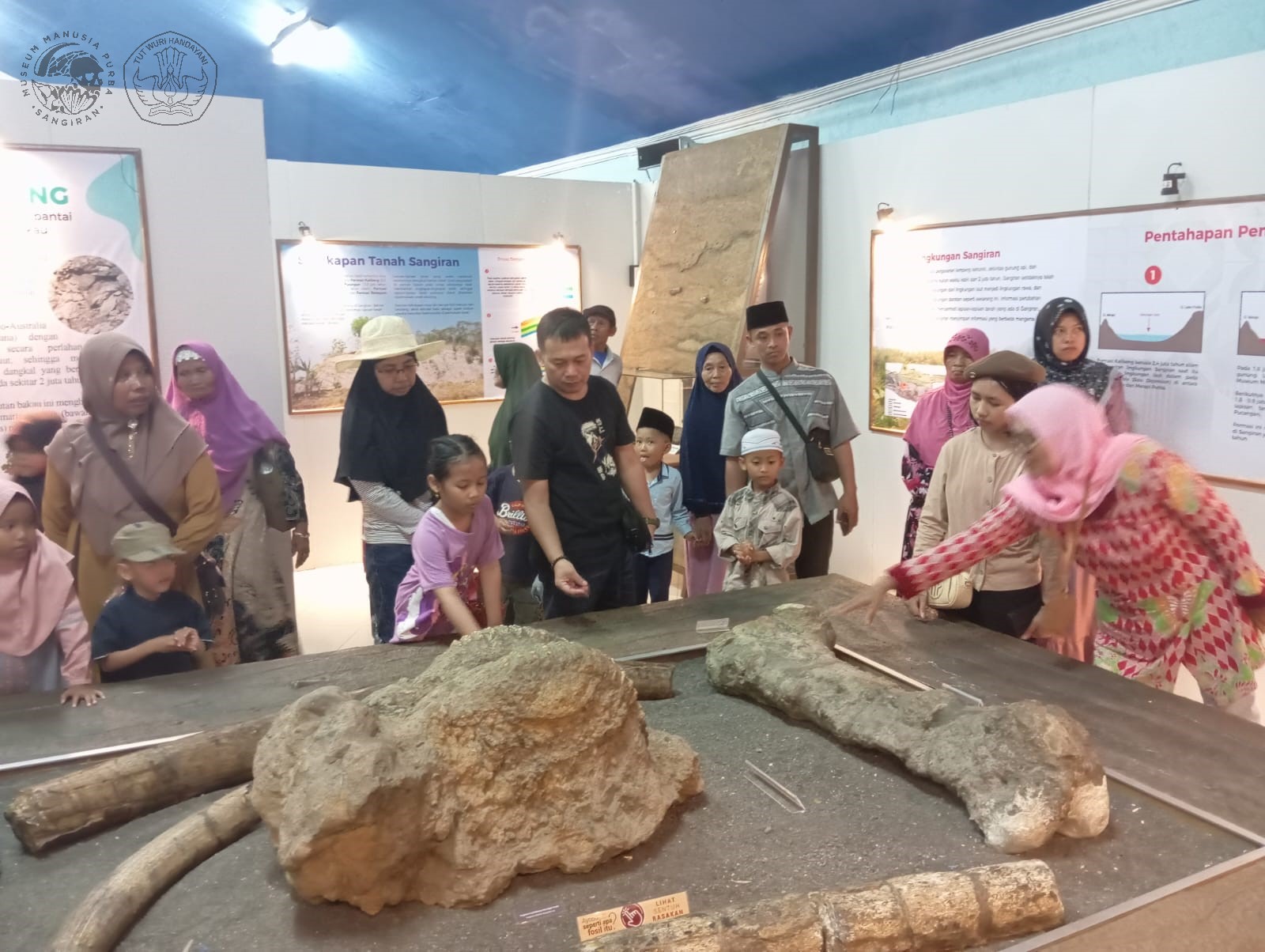Sangiran Early Man Site is one of World Cultural Heritage, acknowledged to give the clear depiction on cultural, flora and fauna, and also human evolution. One important thing of Sangiran Site is the stratigraphy which provide information on environmental changes and also the life of fauna and flora for continuously more than 2 million of years.
The fauna lived in Sangiran can be identified through fossils finding, found in Sangiran stratigraphy. Fauna fossils can be found in every level of stratigraphy in Sangiran, from the oldest that is Kalibeng Formation (2,4 mya) to the younger, which is Notopuro Formation (250,000-70,000 years ago).
On 2,4 mya, Sangiran was a deep sea, characterized by the layer of Kalibeng Formation’s blue clay containing marine fauna such as sharks, stingrays, sea urchins, crionoids, etc. At around 1,7 mya, Sangiran’s environment was changed to be land, which was first a swamp environment, supported by the findings of crocodile fossils, and land fauna living at that time.
When Sangiran then totally was changed to be land environment, at 900,000 years ago, various animal lived at that time. The existence of those fauna can be known from fossils found in fluvio-volcanic layer of Kabuh Formation such as ancient elephants, pig, hippo, deer, rhino, banteng, buffalo, etc. In other words, that time is golden era for vertebrae. (Pipit Puji Lestari, Marlia Yulianti Rosyidah, Febri Wijanarko, Iwan SB)
Plese click here





